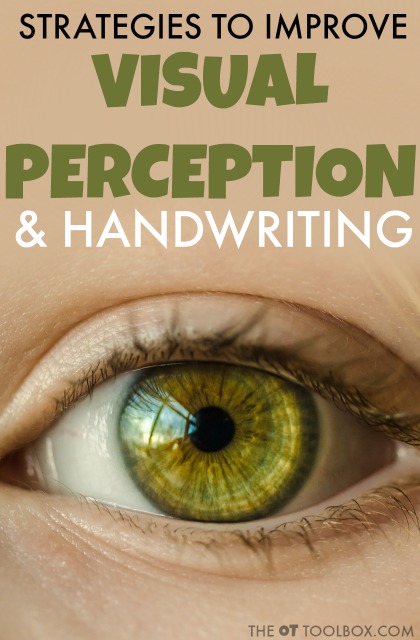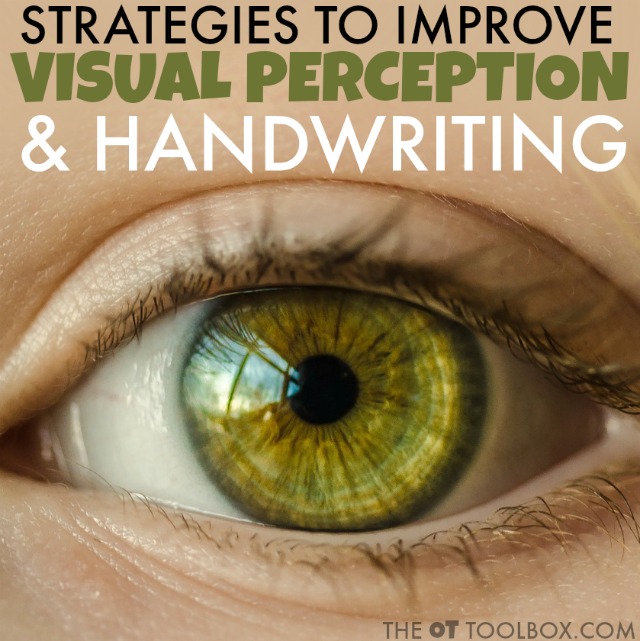When visual perceptual skills interfere with handwriting, students can be limited in copying skills, placing letters and words on lines, and in given spaces on worksheets. There are other red flags related to visual processing and handwriting. These challenges really impact legibility, letter reversals, letter size, and overall neatness of handwriting.
While parents and teachers can be aware of these issues and the need for intervention in order to address underlying needs, it can be difficult to pinpoint exact strategies for improving problem areas.

Visual Perception Needs and Handwriting
Visual Perceptual Skills consist of several abilities that allow us to utilize the information we see visually. We process and use that visual information to interpret what we see. Visual perceptual skills include the following skill areas:
Each of these visual perceptual skills is described further in this post that shares helpful visual perceptual tools for improving on these skills.
Visual perceptual skills play an important role in letter formation, copying words and letters, spatial awareness, left-to-right orientation and organization on a page, line use, size awareness.
When visual perceptual skills coordinate and integrate with motor skills, a child demonstrates functional visual motor integration and is able to copy and form letters appropriately when writing.
Strategies to Help with Visual Perceptual Needs and Handwriting
Try these handwriting accommodation strategies to address a variety of handwriting challenges.
A common tool for therapists is to use modified paper when visual processing issues interfere with handwriting legibility and functional use.
One way to work on handwriting legibility is to add bold lines to the paper. This is just one easy way to help kids attend to the lines on the page, visualize a stopping point for letter formation, and draw attention to the writing space.
Adding bold lined paper into the classroom can be a struggle as well. Given a variety of worksheets, a simple marker can be one way to address this need for creating a bold baseline.
Adding a highlighted space to the lines can be a way for students to form letters of appropriate size.
Using color-coded lines as visual tools for starting and stopping points can be a valuable strategy to help kids with placement on lines accurately. One of the most impactful areas to address when working on overall legibility is to address letter size and spacing. When these two areas are addressed, written work can be much more legible handwriting overall.
Given these three strategies for improved legibility, can can be difficult to know what works best for each individual student.
Having options to trial with each student can make a big impact in success of the student and motivation to try handwriting tasks.
Read about the Visual Perception, Tangrams, & Handwriting Workbook
For the student who struggles with handwriting, practice can many times be a source for stress low confidence.
Working on visual perception in handwriting? Why not start a handwriting club for kids? Kids can work on handwriting skills in a fun way. Here’s how to start a handwriting club kids will WANT to join!







